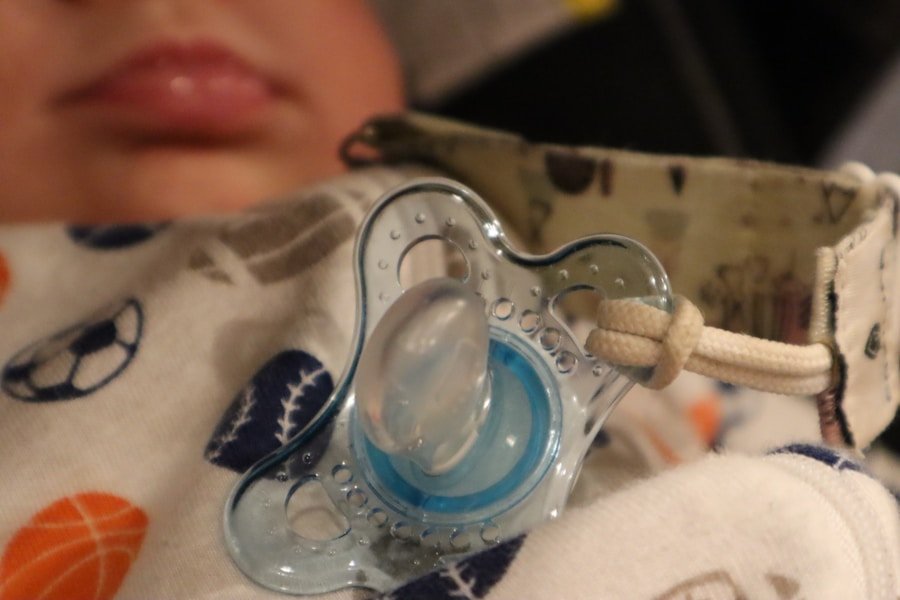When it comes to choosing the right breast pump for you, it’s important to understand the different options available. There are two main types of breast pumps: electric and manual. Electric breast pumps are powered by a motor and are typically more efficient and convenient, making them a popular choice for many moms. On the other hand, manual breast pumps are operated by hand and are often more affordable and portable, making them a great option for moms on the go. It’s important to consider your lifestyle and pumping needs when deciding which type of breast pump is right for you.
In addition to the type of breast pump, there are also different styles and sizes to consider. Some breast pumps are designed for single pumping, while others are designed for double pumping. Double pumping can help to save time and increase milk supply, so it’s worth considering if you plan to pump frequently. It’s also important to consider the size and fit of the breast pump flanges, as a proper fit can help to maximize comfort and milk output. Taking the time to understand your breast pump options can help you make an informed decision that meets your specific needs.
Key Takeaways
- Understanding the different breast pump options available is crucial for choosing the right one for you.
- Factors to consider when choosing a breast pump include frequency of use, portability, and suction strength.
- Electric breast pumps offer convenience and efficiency, while manual breast pumps are portable and affordable.
- Finding the right fit and ensuring comfort while using a breast pump is essential for successful pumping sessions.
- Look for features such as adjustable suction levels, double pumping capabilities, and easy cleaning when choosing a breast pump.
Factors to Consider When Choosing a Breast Pump
When choosing a breast pump, there are several factors to consider to ensure that you find the right fit for your needs. One important factor to consider is your pumping frequency. If you plan to pump frequently, you may want to invest in a high-quality electric breast pump that is designed for daily use. On the other hand, if you only plan to pump occasionally, a manual breast pump may be a more cost-effective option.
Another factor to consider is your milk supply. If you have a low milk supply or are struggling with breastfeeding, you may want to look for a breast pump that is designed to help stimulate milk production. Some electric breast pumps offer adjustable suction levels and pumping patterns, which can help to mimic a baby’s natural nursing pattern and encourage milk flow. It’s also important to consider your budget when choosing a breast pump, as prices can vary widely depending on the type and features of the pump. By taking these factors into consideration, you can find a breast pump that meets your specific needs and helps you achieve your breastfeeding goals.
Electric vs. Manual Breast Pumps: Pros and Cons
When it comes to choosing between an electric and manual breast pump, there are several pros and cons to consider. Electric breast pumps are often more efficient and convenient, making them a popular choice for many moms. They are powered by a motor, which helps to create a consistent suction and pumping pattern. This can help to save time and energy, especially for moms who need to pump frequently or for long periods of time. Electric breast pumps also offer adjustable suction levels and pumping patterns, which can help to mimic a baby’s natural nursing pattern and encourage milk flow.
On the other hand, manual breast pumps are operated by hand and are often more affordable and portable. They do not require an electrical outlet or batteries, making them a great option for moms on the go. Manual breast pumps can also be easier to clean and maintain, as they have fewer parts and components. However, they do require more effort and energy to use, as they rely on manual pumping action. It’s important to weigh the pros and cons of each type of breast pump to determine which option is best for your specific needs and lifestyle.
Finding the Right Fit: Sizing and Comfort
| Brand | Model | Features | Price |
|---|---|---|---|
| Medela | Pump in Style Advanced | Double electric pump, adjustable speed and vacuum settings | 299.99 |
| Spectra | S1 Plus | Hospital grade, rechargeable battery, customizable settings | 199.99 |
| Philips Avent | Comfort Double Electric | Massage cushion, 3 expression settings, quiet motor | 179.99 |
Finding the right fit for your breast pump is essential for maximizing comfort and milk output. One important factor to consider is the size of the breast pump flanges. Flanges that are too small or too large can cause discomfort and reduce milk flow, so it’s important to find the right fit for your body. Many breast pump manufacturers offer different flange sizes, so it’s worth taking the time to measure your nipple size and shape to ensure a proper fit.
In addition to flange size, it’s also important to consider the overall comfort of the breast pump. Look for a breast pump that offers adjustable suction levels and pumping patterns, as this can help to customize the pumping experience to your specific needs. Some breast pumps also offer additional features such as massage cushions or soft silicone inserts, which can help to increase comfort and stimulate milk flow. By finding a breast pump that offers a comfortable fit and customizable options, you can make the pumping experience as pleasant as possible.
Features to Look for in a Breast Pump
When choosing a breast pump, there are several features to look for that can help to enhance the pumping experience. One important feature to consider is adjustable suction levels and pumping patterns. This can help to mimic a baby’s natural nursing pattern and encourage milk flow, which can be especially helpful for moms who struggle with low milk supply. Look for a breast pump that offers multiple settings and options for customization, so you can find the right fit for your body and pumping needs.
Another feature to look for is a closed system design. Closed system breast pumps have a barrier that prevents milk from entering the tubing or motor of the pump, which can help to prevent mold and bacteria growth. This can help to ensure that your breast pump remains hygienic and safe for use, especially if you plan to share or resell the pump in the future. Other features to consider include portability, battery or USB charging options, and compatibility with hands-free pumping accessories. By considering these features, you can find a breast pump that meets your specific needs and helps you achieve your breastfeeding goals.
Budget-Friendly Options for Breast Pumps
Breast pumps can vary widely in price, so it’s important to consider your budget when choosing a pump. While high-end electric breast pumps can be expensive, there are also budget-friendly options available that offer quality performance at a lower cost. Manual breast pumps are often more affordable than electric pumps, making them a great option for moms on a budget. They are also portable and easy to clean, making them a convenient choice for occasional use.
Another budget-friendly option is to look for insurance coverage or reimbursement for a breast pump through your healthcare provider. Many insurance plans now cover the cost of a breast pump as part of their maternity benefits, so it’s worth checking with your provider to see if you qualify for this coverage. Some insurance plans may also offer reimbursement for the purchase of a breast pump, so be sure to keep your receipts and documentation for potential reimbursement. By exploring these budget-friendly options, you can find a breast pump that meets your needs without breaking the bank.
Tips for Using and Maintaining Your Breast Pump
Once you’ve chosen the right breast pump for you, it’s important to learn how to use and maintain it properly to ensure optimal performance and hygiene. Start by reading the manufacturer’s instructions carefully and familiarizing yourself with the different parts and components of the pump. This will help you understand how to assemble, use, and clean the pump effectively.
When using your breast pump, it’s important to find a comfortable and relaxing environment that helps stimulate milk flow. Many moms find that looking at photos or videos of their baby, or using relaxation techniques such as deep breathing or gentle massage, can help with let-down and milk expression. It’s also important to find a comfortable pumping position that allows you to relax and maintain good posture.
In terms of maintenance, it’s important to clean your breast pump after each use to prevent mold and bacteria growth. Disassemble the pump and wash all parts that come into contact with milk in warm, soapy water. Some parts may also be dishwasher safe or require sterilization in boiling water or a steam sterilizer. Be sure to follow the manufacturer’s instructions for cleaning and sterilizing your specific breast pump model.
In addition to regular cleaning, it’s also important to inspect your breast pump regularly for signs of wear or damage. Check the tubing, valves, membranes, and flanges for cracks, tears, or discoloration, as these can affect the performance of the pump. Replace any worn or damaged parts as needed to ensure that your breast pump continues to function properly.
By following these tips for using and maintaining your breast pump, you can ensure that it remains hygienic and effective for as long as you need it. Proper care and maintenance can help extend the life of your breast pump and ensure that it continues to meet your breastfeeding needs.
In conclusion, choosing the right breast pump is an important decision that can have a significant impact on your breastfeeding journey. By understanding your options, considering important factors such as pumping frequency and milk supply, and exploring features that enhance comfort and performance, you can find a breast pump that meets your specific needs. Whether you choose an electric or manual pump, finding the right fit and budget-friendly options can help make the pumping experience as pleasant as possible.
Once you’ve chosen a breast pump, it’s important to learn how to use and maintain it properly to ensure optimal performance and hygiene. By following tips for using and maintaining your breast pump, you can ensure that it remains hygienic and effective for as long as you need it. With careful consideration and proper care, your breast pump can be an invaluable tool in supporting your breastfeeding goals.
FAQs
What are the different types of breast pumps available?
There are three main types of breast pumps: manual, electric, and hospital-grade. Manual pumps are operated by hand and are usually more affordable and portable. Electric pumps are powered by electricity or batteries and are available in single or double pump options. Hospital-grade pumps are designed for frequent and long-term use, and are often recommended for mothers with specific breastfeeding challenges.
How do I choose the right breast pump for me?
When choosing a breast pump, consider factors such as your breastfeeding goals, frequency of use, portability needs, and budget. It’s also important to consider the suction strength, comfort, and ease of use of the pump. Consulting with a lactation consultant or healthcare provider can also help you make an informed decision.
What features should I look for in a breast pump?
Some important features to consider when choosing a breast pump include adjustable suction levels, different flange sizes for a comfortable fit, a closed system to prevent milk from entering the tubing, and a portable and lightweight design for on-the-go use. Some pumps also offer additional features such as a timer, memory function, and different pumping modes.
Are there any specific considerations for working mothers when choosing a breast pump?
For working mothers, it’s important to choose a breast pump that is portable, quiet, and efficient. Look for a pump that is easy to clean and assemble, and consider a double electric pump to save time. Some pumps also come with a carrying case and cooler bag for convenient transportation and storage of expressed milk.
What are the potential benefits of using a breast pump?
Using a breast pump can help maintain milk supply, provide relief from engorgement, allow for milk expression and storage, and facilitate breastfeeding for mothers and babies who may face challenges such as latching difficulties or premature birth. It also allows for flexibility in feeding and can support a mother’s return to work or other commitments.



































